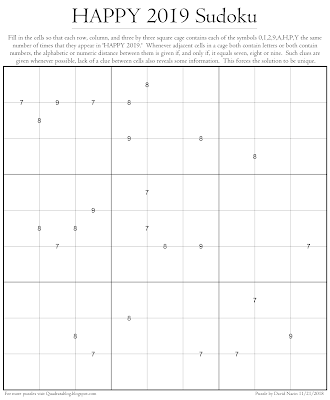Icosahedral Minmax Parity Puzzle
This week, the name of this puzzle is far more intimidating than the puzzle itself. The rule for the clues is actually really simple, but it involves maximums, minimums, and parity, which is the state of evenness or oddness of a number. For example, 2 and 6 have the same parity because they are both even. The numbers 1 and 3 also have the same parity because they are both odd. The numbers 2 and 3 have different parity, because one is even and the other is odd. Once we're past that word, the rule for the clues here is very simple:
When numbers have the same parity, the clue is the minimum. When numbers have different parity, the clue is the maximum.
In addition, the same number can't appear on both ends of the same edge. You'll notice that most of the edges have no clues, which is to make the puzzle slightly more challenging. The numbers one through six are used for the cells here simply because this amount of options seems to fit well with this clue type.
High quality PDF for printing.
When numbers have the same parity, the clue is the minimum. When numbers have different parity, the clue is the maximum.
In addition, the same number can't appear on both ends of the same edge. You'll notice that most of the edges have no clues, which is to make the puzzle slightly more challenging. The numbers one through six are used for the cells here simply because this amount of options seems to fit well with this clue type.
High quality PDF for printing.



Comments
Post a Comment